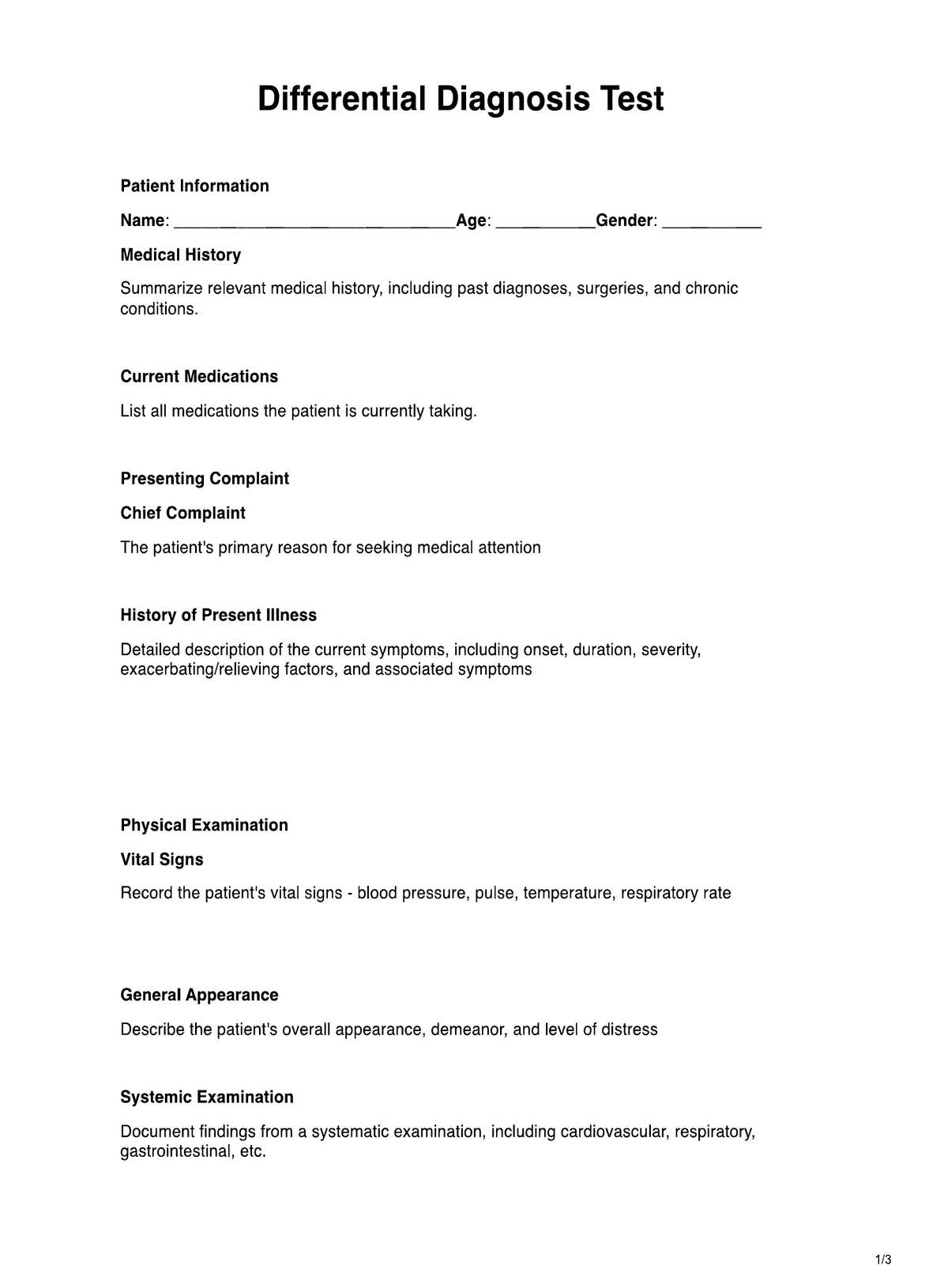Healthcare professionals, including doctors, nurses, and specialists, typically request Differential Diagnosis Tests when evaluating patients with unclear or complex medical symptoms.

Differential Diagnosis
Learn about the importance and process of Differential Diagnosis Tests in medicine. Find accurate diagnosis information.
Use Template
Differential Diagnosis Template
Commonly asked questions
Differential Diagnosis Tests are used when patients present with symptoms that require a systematic approach to identify the underlying cause, especially when multiple conditions could explain those symptoms.
Healthcare providers use them to gather patient information, perform physical exams, order diagnostic tests, analyze results, and systematically narrow potential diagnoses to arrive at an accurate one.
EHR and practice management software
Get started for free
*No credit card required
Free
$0/usd
Unlimited clients
Telehealth
1GB of storage
Client portal text
Automated billing and online payments











